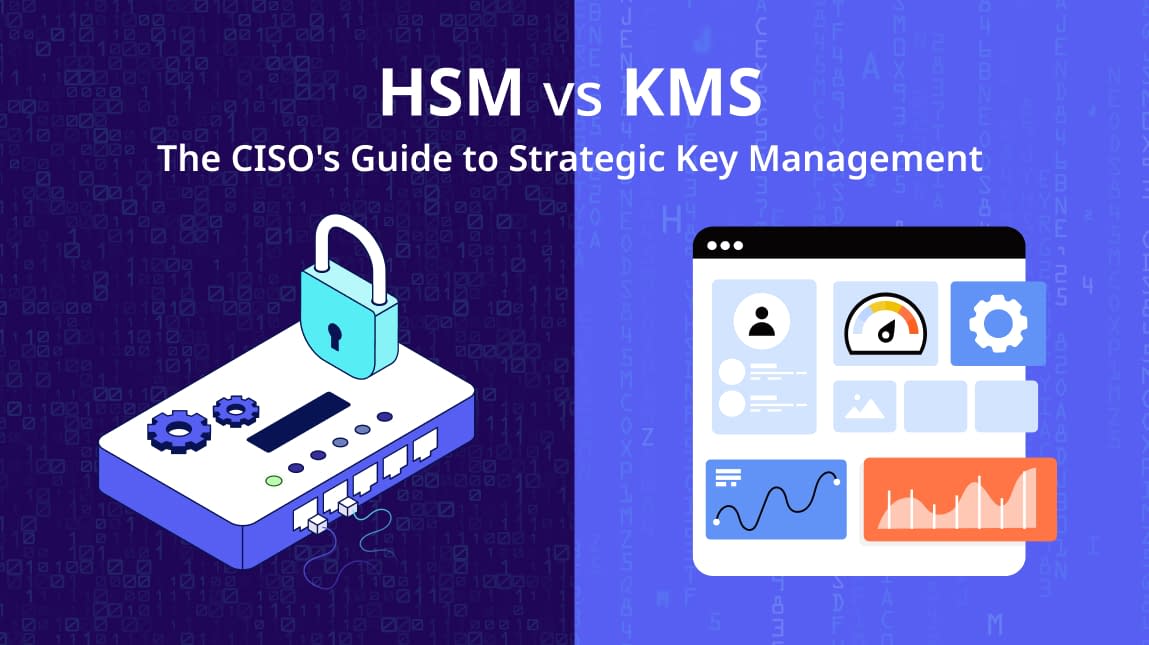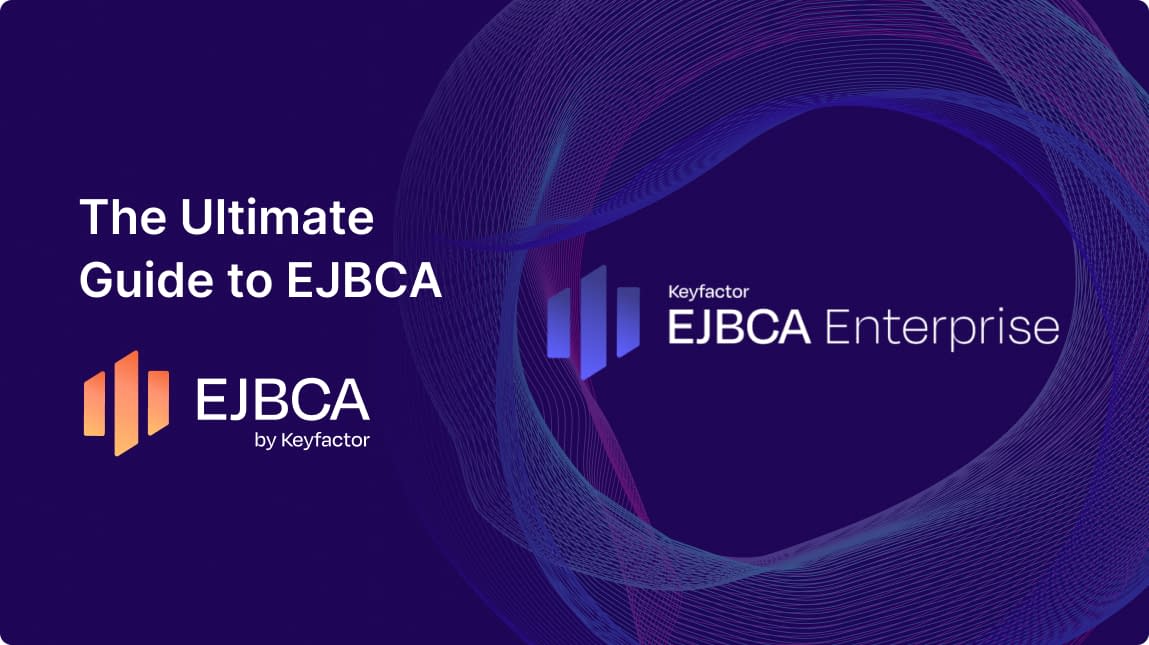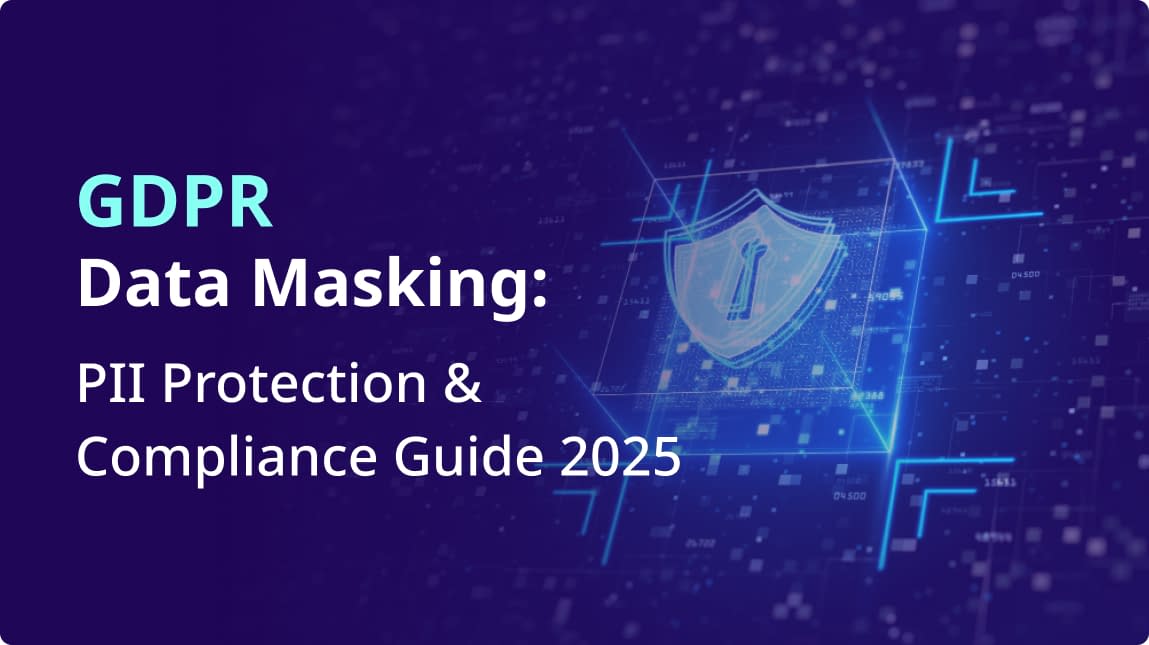Real-world experiences from the cryptographic trenches
When a blockchain wallet provider detected anomalous activity in their application stack at 2 AM, the difference between HSM and KMS wasn’t academic – it was the difference between a minor security incident and losing millions in customer cryptocurrency. Their dedicated HSM deployment (AWS CloudHSM), with single-tenant hardware control and direct PKCS#11 access ensured attackers couldn’t compromise wallet keys, preserving both funds and reputation.
Three months earlier, we had helped them migrate from Azure Key Vault to an AWS Cloud HSM after a detailed threat model revealed the need for dedicated hardware isolation and separation from provider-managed control planes. That single architectural decision prevented what could have been a company-ending breach.
The above isn’t an isolated case. We’ve implemented cryptographic solutions across banking, healthcare, government, and fintech sectors. We’ve seen firsthand how the wrong choice leads to compliance failures, operational nightmares, and security breaches that make headlines.
Your organization’s most sensitive data is only as secure as the keys that protect it. But choosing between Hardware Security Modules (HSMs) and Key Management Services (KMS) isn’t just a technical decision. It’s a strategic one that affects compliance, costs, and your organization’s security posture for years to come.
Terminology note: In this article, “HSM” includes both on‑premises HSM appliances and dedicated cloud HSM services (e.g., AWS CloudHSM, Azure Dedicated HSM, Thales DPoD), unless we explicitly distinguish between them.
Today, we’ll share our battle-tested insights to help you make the right decision for your organization.
Need expert guidance on your cryptographic architecture?
Contact us for a strategic assessment of your key management needs
Accutive Security has implemented HSM and KMS solutions across banking, healthcare, government, and fintech
HSM vs. KMS: A Seven-Question Decision Framework
Before diving into war stories and technical details, ask yourself these five questions. Your answers will point you in the right direction between HSM and KMS:
1. Are you handling asymmetric cryptographic operations such as signing, certificate issuance, or blockchain key management?
Yes → You likely need an HSM
No → KMS is likely sufficient for symmetric encryption needs
2. Do you need a provable Root of Trust with dedicated, non-shared hardware control?
Yes → Use an HSM
No → KMS can meet your requirements
3. Are your keys subject to strict regulatory mandates such as PCI PIN, eIDAS Qualified Signatures, or FIPS Level 3 with attestation?
Yes → HSM is required
No → KMS typically satisfies general compliance standards like HIPAA, SOC 2, and GDPR
4. Are you securing infrastructure-level identities such as TLS certificates, SSH keys, firmware signing, or root CA keys?
Yes → HSM is recommended
No → KMS may be sufficient for application-level encryption
5. Are you implementing custom cryptographic protocols such as quorum-based signing, threshold cryptography, or blockchain integrations?
Yes → Use an HSM for low-level crypto control
No → KMS provides a simpler managed solution
6. Are you encrypting cloud-native services such as S3, RDS, or file storage, without managing custom key hierarchies?
Yes → KMS is the right fit
No → Consider HSM if your architecture requires full control of key hierarchy or usage policies
7. Do you want a fully managed key lifecycle with audit logging, integration to cloud APIs, and no hardware to manage?
Yes → Choose KMS
No → Use HSM if you need granular control over key operations and lifecycle management
Now let’s dive into why these questions matter.
The Fundamental Difference: Hardware vs Software Trust
Think of it this way:
HSM = A bank vault where keys never leave the vault, ever
KMS = A sophisticated key manager that may use various storage methods
A Hardware Security Module (HSM) creates a hardware-enforced boundary around your keys. When we say “non-exportable,” we mean the hardware physically prevents key material from being extracted, even by administrators. The keys are born in the HSM, live in the HSM, and die in the HSM. To learn more about fundamentals of Cloud HSMs and their advantages, explore our article: What is Cloud HSM?
Key Management Service (KMS) focuses on lifecycle management at scale. It handles key rotation, access policies, and integration with cloud services. Some KMS solutions use HSMs underneath, but they prioritize convenience and automation over hardware-enforced protection.
Root of trust is the foundation of your cryptographic architecture. It’s the thing you trust completely because you must trust something. If your root of trust is compromised, everything built on top fails. This is why HSMs exist.
FIPS 140-2 Level 3 means the hardware is tamper-resistant and will destroy keys if someone tries to attack it physically. Think of it as a self-destructing vault that erases everything if you try to crack it open.
Cloud HSM vs Dedicated (On-Prem) HSM
Both are HSMs. The difference is the operational model and control plane:
Control & Tenancy
On‑Prem HSM: You own/operate the hardware; fully isolated; maximum environmental control.
Cloud HSM (Dedicated): Single‑tenant HSMs delivered as a service; isolated crypto partitions, provider‑managed facility & platform.
Compliance & Audits
On‑Prem: Easiest to demonstrate “you control everything” (physical + logical) when auditors require strict segregation.
Cloud HSM: Meets strong controls (FIPS 140‑2/3 Level 3) while simplifying evidence via provider reports – verify this satisfies your auditor.
Operations & Staffing
On‑Prem: You manage racking, firmware, backups/cloning, tokens, quorum, DR drills.
Cloud HSM: You manage crypto and clustering; the provider handles hardware lifecycle and facilities.
Networking & Latency
On‑Prem: Optimal when keys must reside inside a private datacenter or for ultra‑low‑latency on‑prem workloads.
Cloud HSM: Best when workloads are cloud‑native or multi‑region; be mindful of region‑bound clusters and explicit key‑clone processes.
Cost Model
On‑Prem: CapEx + specialized staff; great for steady, high‑volume, long‑lived workloads.
Cloud HSM: OpEx, faster time‑to‑value; can be more expensive at large scale or when cloned per tenant/region.
Vendor/Platform Features
On‑Prem: Max customizability; integrates with legacy PKI and private networks.
Cloud HSM: Easier elasticity and ecosystem integrations; some constraints around cross‑region key movement and provider tooling.
Rule of thumb: If auditors/regulators require physical custody and maximum segregation, or you have high, stable throughput and staffing, on‑prem can win. If you want faster rollout, cloud‑native integration, and reduced hardware overhead, cloud HSM is often the pragmatic choice.
When HSMs Are Non-Negotiable: The Decision Matrix
Based on hundreds of client engagements, here are the scenarios where HSMs (cloud or on-prem) become essential. We indicate when cloud HSM or on-prem is the more common deployment:
Certificate Authority Operations
Use Case: Root key protection with non-exportable guarantees
Why HSM: PKI compliance requirements mandate FIPS 140-2 Level 3
Real Example: One government client stored the root CA in software. Attackers extracted the private key during a breach, forcing them to rebuild their entire PKI from scratch – every certificate, every device, everything.
The Lesson: Root CA keys are the ultimate root-of-trust. If they’re compromised, your entire digital identity infrastructure collapses.
Code Signing & Firmware Protection
Use Case: Software supply chain security, IoT device authentication
Why HSM: Code signing keys are high-value targets for supply chain attacks
Trend: HSM usage is exploding for machine identities in DevOps pipelines. Developers want signing keys outside the “DevOps blast radius” – if the CI/CD system gets compromised, the signing keys remain safe.
Financial Services & Payments
Use Case: PCI-DSS mandated use cases, payment processing
Why HSM: It’s not optional. Visa, Mastercard, and PCI-DSS mandate HSMs for payment card processing
Reality Check: Every major bank uses HSMs for payment processing, PIN verification, and transaction signing. There’s no workaround.
Blockchain & Cryptocurrency
Use Case: Wallet private key protection, crypto custody
Why HSM: Private keys must not be exportable, period.
War Story: The blockchain wallet provider I mentioned earlier originally stored wallet private keys in Azure Key Vault. During our threat modeling session, we asked: “What happens if someone compromises your Azure subscription?” The answer was uncomfortable – they could potentially export keys and steal wallets.
We recommended switching from Azure Key Vault (KMS) to AWS CloudHSM (a dedicated HSM service) with restricted signing operations. Three months later, they detected that anomalous activity. The non-exportable nature of HSM-protected keys prevented wallet theft. That architectural decision saved them millions and their reputation.
When KMS Is Your Best Choice
Cloud Data Encryption
Use Case: Database encryption (TDE), file system and storage encryption
Why KMS: Symmetric key encryption at scale, with automated rotation
Integration: SQL Server, Oracle, and others integrate directly with KMS solutions via APIs like KMIP
Application Secrets Management
Use Case: API keys, credentials, certificates
Why KMS: Built for scale and automation. Perfect for thousands of secrets across hundreds of applications
Scale Factor: KMS shines when you have complex key hierarchies and need automated lifecycle management
Multi-cloud Key Orchestration
Use Case: BYOK/HYOK scenarios, cross-platform key management
Why KMS: Unified control across AWS, Azure, GCP, and on-premises
Business Value: Deploy in minutes, not days. Focus on services, not hardware.
Tokenization at Scale
Use Case: PCI scope reduction, data protection
How it Works: Use a tokenization platform -vaulted (e.g., Thales) or vaultless (e.g., ADM) – to perform high-volume tokenization. Integrate with a KMS to manage the encryption key hierarchy and perform envelope encryption for vault data, enabling centralized policy enforcement at scale.
Real-World HSM vs KMS: Case Studies
Success Story: Regional Bank’s PCI-DSS Recovery
The Challenge: A regional bank failed its PCI-DSS assessment due to poor key custody documentation. They were using on-premises Entrust HSMs that no one could maintain due to a lack of internal expertise. The hardware was working, but they couldn’t prove proper key management to the auditors.
The Solution: We migrated them from on-premises Entrust HSMs to
Thales DPoD (cloud HSM) with:
Centralized governance framework with documented procedures
Automated key lifecycle processes with audit trails
Cloud-based management that didn’t require specialized hardware skills
The Outcome
Passed re-audit in 6 weeks
Reduced total crypto workload by 40% through automation
Switched from unpredictable CapEx hardware costs to predictable OpEx subscription
Lesson Learned: Migration to cloud HSM isn’t just about changing infrastructure. It’s an opportunity to improve governance and leverage automation. Sometimes the technology works fine, but the processes around it are broken.
Disaster Averted: The Multi-Region Architecture Failure
The Challenge: A healthcare company deployed AWS CloudHSM in multiple regions, expecting high availability. Their architecture team assumed “high availability” meant automatic cross-region key replication.
What Went Wrong
AWS CloudHSM clusters are region-bound with no built-in key replication
When US-East-1 had issues, applications in US-West-2 couldn’t decrypt patient data
Critical healthcare systems went down for 4 hours during peak operations
The Fix: We implemented manual key cloning and synchronization across HSMs, but it was operationally fragile and easy to forget during disaster recovery testing.
The Lesson: Cloud HSM providers don’t automatically solve distributed systems problems. You must manually design and test cross-region key availability. That’s operationally complex and expensive to get right.
The Cost Explosion: Tenant Isolation Gone Wrong
The Challenge A multinational SaaS vendor used Azure Dedicated HSMs for tenant isolation in regulated markets (EU financial services, US healthcare, Singapore banking).
The Problem
Azure Dedicated HSM is single-tenant and charges per HSM
They needed physical separation for each major tenant
With 20+ customers requiring isolation, monthly costs ballooned to over $45,000 in idle HSMs
The Reality Check: We discovered that an HSM-backed Azure Key Vault with proper RBAC policies met its actual compliance requirements. They were gold-plating their architecture based on a misunderstanding of tenant isolation requirements.
The Lesson: “Dedicated HSM” sounds more secure, but often standard KMS with proper access controls meets regulatory requirements at 10% of the cost. Always validate compliance requirements with actual auditors, not vendor sales teams.
The Admin Quorum Lockout
The Challenge: A federal agency deployed on-premises Luna HSMs with quorum authentication – requiring multiple administrators to authorize key access.
What Happened
Two of the three original key custodians left the organization
No proper token transfer procedures were documented
The remaining administrator couldn’t meet the quorum threshold for key access
Mission-critical systems couldn’t access encrypted data
The Result: The agency had to declare a formal security incident and rebuild its entire PKI infrastructure from scratch, six months of downtime for non-critical systems.
The Lesson: Physical HSMs require human process resilience, not just technical controls. Your disaster recovery plan must account for people leaving, not just hardware failing.
The Core Distinction That Changes Everything
Now that you understand the stakes, here’s the detailed technical comparison:
| Attribute | HSM | Key Manager (KMS) |
|---|---|---|
| Key Storage | Hardware-backed, tamper-proof | Software or hardware backed (may integrate with HSM) |
| Key Types | RSA, EC, AES, Algorithms (GCM, PSS, ECB, and CBC), Digest/hash, Key Wrapping | AES, ARIA, SEED, TDES, RSA, EC, Digital Certificates |
| Key Operations | Encryption, Decryption, Signing, Key Generation, Key Storage | Sign, Verify, Encrypt, Decrypt, Wrap, Unwrap, Export, Generate MAC, Verify MAC, Derive Key, Content Commitment, Key Agreement, Certificate Sign, CRL Sign, Generate Cryptogram, Validate Cryptogram, Translate Encrypt, Translate Decrypt, Translate Wrap, Translate Unwrap, FPE Encrypt, FPE Decrypt |
| Deployment | On-prem hardware, dedicated cloud instances | On-prem hardware, on-prem virtual, software service or cloud-native |
| Key Generation | Internal, hardware-random | Often external or soft-generated, can import |
| Exportability | Private keys are non-exportable (enforced by hardware), however they can be wrapped and exported, | Configurable, including exportable |
| Performance | High throughput crypto (e.g., TLS offload, code sign) | Efficient for key orchestration and lifecycle management |
| Compliance | FIPS 140-2/3 Level 3 | FIPS 140-2/3 Level 3 (if HSM-backed) |
| Ideal For | Root-of-trust, signing, CA, payments, tokenization | Encrypting at rest, database encryption, tokenization, KMIP, BYOK and HYOK scenarios, key lifecycle management |
Key control is a root-of-trust issue, not a tooling issue. Most executives only understand this after a breach, failed compliance audit, or operational outage caused by lost or compromised keys. If you can’t prove how your keys are generated, stored, and used, you don’t control your data.
Platform Comparisons: AWS CloudHSM, Azure Dedicated HSM, Thales DPoD, Entrust nShield
AWS CloudHSM
Best For: High-performance crypto, direct PKCS#11 access, teams with deep cryptographic expertise
Strengths:
True hardware control with Cavium (now Marvell) HSM backing
Best choice when you need custom cryptographic operations
Direct API access for specialized use cases
Strong performance for bulk operations
Challenges:
Terrible fit for simple use cases. Requires deep crypto and systems knowledge
Key cloning and scaling require manual processes between clusters
AWS support teams often treat CloudHSM as a black box – they know the service, not the crypto
Real Experience: Clients often discover that CloudHSM is overkill for basic key rotation and lifecycle management. Those with simpler requirements usually find AWS KMS handles their actual needs at a fraction of the cost and complexity.
Azure Dedicated HSM
Best For: Regulated industries requiring complete tenant isolation
Strengths:
Complete tenant isolation using dedicated Thales Luna 7 HSM appliances
Clear compliance story for auditors who demand physical separation
Good for crypto root of trust and CA root key storage
Challenges:
Not a native Azure service. Essentially hosted Luna HSM with Azure networking
Limited to specific Azure regions with no auto-scaling capabilities
Requires careful subnet design and often conflicts with existing firewall rules
Expensive for anything but the most demanding use cases
Real Experience: A healthcare client deployed Azure Dedicated HSM for HIPAA compliance, then discovered Azure Key Vault Premium would have met their requirements at 20% of the cost.
Thales Data Protection on Demand (DPoD)
Best For: Multi-region deployments, cloud-first organizations, rapid deployment
Strengths:
Rapid deployment with REST API-driven provisioning
Subscription model eliminates hardware CapEx
Self-service tenant portal with usage analytics
Focus on services and APIs, not hardware management
Challenges:
Not cost-effective for high-volume operations compared to dedicated hardware
Clients complain about token sprawl and unclear billing tied to usage patterns
Requires upfront API knowledge for multi-region deployments
Limited customization compared to dedicated HSMs
Real Experience: Perfect for a fintech startup that needed FIPS 140-2 Level 3 validation for their Series B funding but couldn’t justify dedicated hardware costs.
Entrust nShield
While Thales Luna dominates cloud discussions, Entrust nShield remains critical in government, banking, and national ID programs.
Entrust Strengths:
Security World architecture: split knowledge, quorum-based control, no single administrator can unlock keys
Highly valued in regulated environments demanding granular multi-operator governance
Deeply integrated with PKI platforms, smartcard issuance, and legacy identity systems
Stays deployed in large banks and the government due to operational inertia and procurement mandates
Entrust Challenges:
High setup and operational complexity; Security World requires strict administrative discipline
Loss of quorum or tokens causes complete lockouts, requiring infrastructure rebuilds
Cloud-native offerings are less mature compared to Thales DPoD
Requires specialized knowledge that’s hard to find and retain
Use Case Example: A national ID program used Entrust nShield with Security World for smartcard issuance, valuing the split knowledge architecture. However, staff turnover without proper documentation nearly caused a complete key access lockout, highlighting the human risk that goes beyond technology.
Common HSM vs KMS Misconceptions That Cost Money
Through our client work, we’ve identified recurring misconceptions that lead to expensive mistakes:
“Can’t I just export the key from KMS and move it to another cloud?”
Reality: A few KMS solutions don’t allow key export by default, especially for symmetric keys. Clients are often shocked when they realize they can’t migrate keys between cloud providers or recover them outside the KMS ecosystem.
Impact: Locks you into a single cloud provider unless you architect a BYOK (Bring Your Own Key) strategy from day one.
“Why do I need an HSM if I already have Azure Key Vault Premium? (HSM‑backed KMS ≠ dedicated HSM access or policy control).”
Reality: Azure Key Vault Premium uses HSM-backed storage, but it doesn’t give you direct HSM access or full policy control like a dedicated HSM. You’re using shared HSM infrastructure managed by Microsoft.
Impact: Clients in heavily regulated sectors (financial services, pharmaceuticals, government) often realize too late that they need dedicated HSM control or full non-exportable key enforcement, not just “HSM-backed” encryption.
“So HSM is just a more secure version of KMS, right?”
Reality: No. HSM and KMS solve different problems. HSM is about hardware-enforced trust boundaries and non-exportability. KMS is about key lifecycle management at scale and operational efficiency.
Impact: Clients confuse policy enforcement (KMS) with hardware-enforced protection (HSM) and run into compliance failures when auditors challenge them to prove key protection mechanisms.
“Why is it so complicated just to sign something?”
Complicated sign is the most common developer complaint. They expect to call an API and be done. The reality is that secure cryptography requires understanding protocols, testing integrations, and aligning with security policies, especially when you’re signing or encrypting sensitive data that could end up in court or regulatory proceedings.
Skills and Team Requirements for HSM and KMS
KMS Requirements:
IAM policies and cloud access management
API integration and modern development practices
Understanding of automated key lifecycle management
Cloud security model comprehension
HSM Requirements:
Cryptographic protocols (PKCS#11, JCE, CNG)
Hardware lifecycle management and maintenance
Disaster recovery procedures and testing
Physical security token and partition management
Deep understanding of certificate management
Cloud HSM vs On‑Prem nuances: Cloud HSM reduces hardware care‑and‑feeding but still requires PKCS#11/JCE/CNG expertise, partition management, clustering, and key‑cloning discipline; on‑prem adds facilities, tokens, and appliance lifecycle duties.
The staffing reality: Good cryptographic engineers often start at $150,000 and are hard to find. KMS reduces the specialized knowledge requirement, while HSM increases it.
Struggling to find cryptographic expertise for your HSM implementation? Accutive Security’s team has hands-on experience with Thales, Entrust, AWS CloudHSM, and Azure Dedicated HSM. Let us bridge the skills gap while your team learns. Schedule a consultation.
The Implementation Difficulty: HSM vs KMS
| Task | KMS | HSM |
|---|---|---|
| Initial setup | 1 to 2 hours | 1 to 2 days |
| App integration | Native SDK or config | Requires coding, SDKs, partition access |
| Key rotation | Automated | Manual or scripted |
| Backup & disaster recovery | Local and cloud-managed | Manual (token-based or cloning) |
| Multi-region or multi-tenant setup | Native support | Complex and expensive |
Migration Strategies: Moving Between HSM and KMS
From Software Keys to HSM
Asset inventory and risk assessment: Catalog all keys and identify which ones need hardware protection
Phased migration planning: Start with new applications, gradually migrate existing systems
Parallel operation period: Run both systems during testing and validation
Cutover and validation: Complete migration with rollback procedures
From HSM to Cloud KMS
Key exportability assessment: Determine which keys can be migrated vs regenerated
Compliance impact analysis: Ensure KMS meets regulatory requirements
Gradual workload migration: Move non-critical applications first
Legacy system integration: Plan for systems that can’t be easily changed
Hybrid Architecture (Most Common)
Most organizations end up with both:
HSM for: Root CA keys, code signing, payment processing, “crown jewel” operations
KMS for: Application encryption, database keys, secrets management, development environments
Future-Proofing: Post-Quantum and DevOps Integration
Post-Quantum Cryptography (PQC) Readiness
Current State: Most clients are still cataloging their cryptographic assets and identifying where RSA/ECC algorithms are business critical.
Forward-Looking: Some forward-thinking clients (especially in financial services) are testing hybrid signatures that combine classical algorithms with post-quantum alternatives.
The Challenge: Most organizations lack a formal crypto-agility plan and are underestimating migration timelines. PQC isn’t a simple algorithm swap – it affects key sizes, performance, and integration points.
Recommendation: Start preparing now. The transition will be gradual co-existence, not an abrupt switch. Ensure your chosen HSM/KMS platform has a clear PQC roadmap.
DevOps and Machine Identity Integration
The Trend: HSM usage is expanding rapidly into CI/CD pipelines, container signing, and IoT device authentication.
The Driver: Developers want signing keys outside the “DevOps blast radius.” If the CI/CD system gets compromised, the signing keys should remain protected.
The Solution: HSM-backed solutions integrated with tools like HashiCorp Vault, or external signing services that use HSM protection for code signing operations.
Real Example: A major software company now signs every container image and software package using HSM-protected keys. When their build system was compromised, attackers couldn’t sign malicious code because the signing keys were HSM-protected.
The Strategic HSM vs KMS Decision Framework
Use this framework to guide your HSM vs KMS decision:
Step 1: Assess Compliance Requirements
Do you need FIPS 140-2 Level 3 validation?
Are there industry-specific mandates (PCI-DSS, HIPAA, FedRAMP)?
Do regulators require proof of non-exportable keys?
What do your auditors require vs what vendors claim?
Step 2: Evaluate Key Exportability Needs
Must private keys remain non-exportable under all circumstances?
Do you need hardware-enforced key usage policies?
Is the root-of-trust critical to your business model?
What happens if keys are compromised or stolen?
Step 3: Consider Operational Maturity
Does your team have cryptographic expertise?
Can you manage hardware lifecycle and disaster recovery?
Do you prefer CapEx or OpEx cost models?
How do you handle staff turnover and knowledge transfer?
Step 4: Calculate Total Cost of Ownership
Include operational overhead, not just licensing fees
Factor in training and specialized staffing needs
Consider compliance audit and preparation costs
Account for disaster recovery testing and procedures
Step 5: Plan for Scale and Future Needs
What are your current and projected key volumes?
Do you need multi-cloud or hybrid deployments?
Are you preparing for post-quantum cryptography migration?
How will your architecture evolve over the next 5 years?
Key Takeaways: Choosing the Right Key Management Approach
HSM and KMS serve different purposes. Many organizations benefit from both. Please don’t fall into the trap of thinking it’s an either/or decision.
Compliance requirements often dictate the choice, but business model protection matters as much. Consider what happens if your keys are compromised, not just what regulations require.
Operational complexity is a real factor in training, processes, disaster recovery, and staff turnover. The most secure system in the world is useless if your team can’t operate it properly.
Start with threat modeling. Identify your “crown jewel” assets first. What are the keys that, if compromised, would end your business or cause massive regulatory problems?
Plan for crypto agility. The post-quantum future is closer than you think, and migration will be complex regardless of your current architecture.
Your Next Steps
Conduct a cryptographic asset inventory. Catalog what keys you have, how they’re protected, and what they protect. You can’t make good decisions without understanding your current state.
Assess your actual compliance requirements. Talk to auditors and regulators, not just vendor sales teams. Understand what you legally need vs what’s “best practice.”
Evaluate your team’s capabilities honestly. Be realistic about operational maturity and expertise. The best technology is worthless if you can’t implement it properly.
Create a pilot program. Test your chosen approach with non-critical assets first. Learn the operational implications before committing to production deployments.
Develop governance frameworks. Establish clear policies for key lifecycle management, access control, and disaster recovery. Technology is only part of the Solution.
Conclusion
The choice between HSM and KMS isn’t just about technology. It’s about understanding your organization’s risk tolerance, compliance obligations, and operational capabilities.
Make the decision based on your specific requirements, not vendor marketing or industry peer pressure. And remember: you can always start with one approach and evolve as your needs become clearer.
The key to success is making an informed decision and executing it well, rather than making the “perfect” choice and implementing it poorly.
Your keys protect everything that matters to your business. Choose wisely, implement carefully, and plan for the future. The decisions you make today will echo through your organization for years to come.
Ready to secure your cryptographic future?
Whether you need strategic guidance on HSM vs KMS selection, help with complex implementations, or a comprehensive cryptographic audit, Accutive Security brings deep expertise across all major platforms and use cases.











Comment